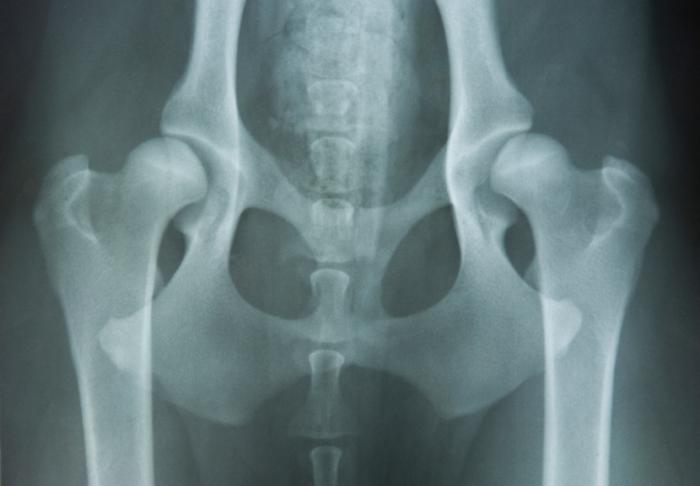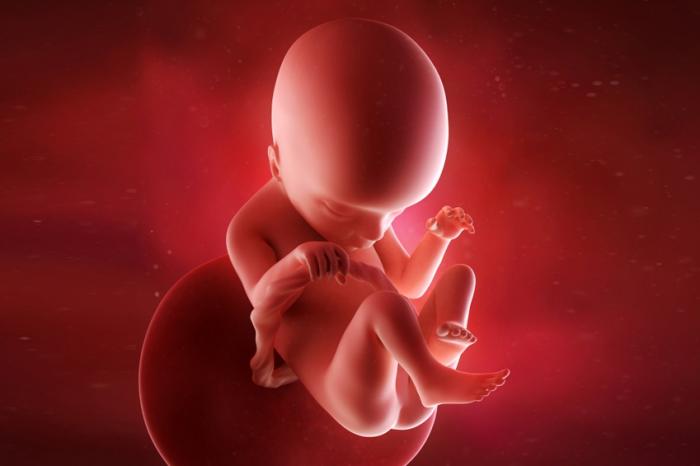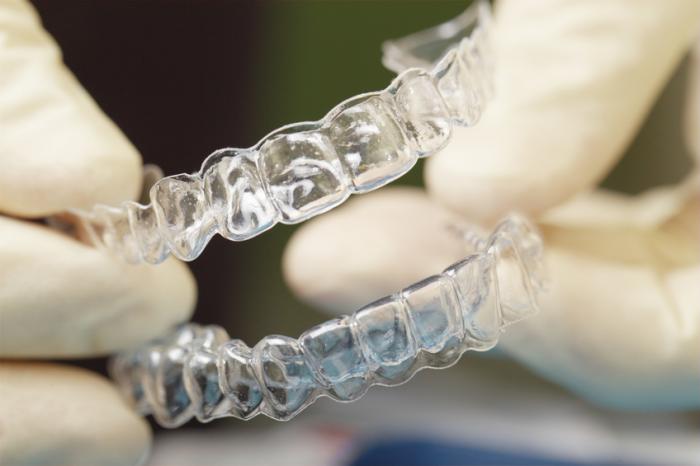Dysplasia is a condition marked by abnormal cells that can lead to enlarged tissue or pre-cancerous cells.
Developmental dysplasia is common in children. Adults usually experience dysplasia linked to an increase in abnormal cell growth.
Different types of dysplasia have different risk factors linked to them, and diagnosing dysplasia can be a key step towards treatment. Avoiding risk factors may also help prevent certain types of dysplasia.
Contents of this article:
- Types of dysplasia
- Causes of dysplasia
- Symptoms of dysplasia
- Dysplasia treatment
- Preventing dysplasia
Types of dysplasia
Dysplasia can occur in any area of the body, and can also accompany other disorders. While there are hundreds of different types of dysplasia, some of the most common forms of dysplasia in children and adults are outlined below.
Developmental dysplasia

Hip dysplasia leads to greater wear and tear on every part of the hip joint.
Dysplasia in children is usually developmental, and can be present as early as a child’s fetal stages. Early diagnosis can lead to quick treatment in many cases.
Hip dysplasia
In children, hip dysplasia is usually called developmental dysplasia of the hip (DDH). Hip dysplasia either means that the hip joint is in the wrong shape or that the hip socket is not in the correct place to cover and support the leg bone. This causes more wear and tear on every part of the hip joint.
Skeletal dysplasia
Skeletal dysplasia is responsible for the disorders known as dwarfism, brittle-bone disease, and cherubism. There are over 350 disorders of the skeleton which are classed as dysplasia. They are caused by a genetic mutation, and can generally be diagnosed in a fetus or infant.
Ectodermal dysplasia
According to the National Foundation for Ectodermal Dysplasias (NFED), there are more than 150 types of ectodermal dysplasia. Certain types of dysplasia may be seen at birth, while others may take years to be diagnosed correctly.
These dysplasias affect the skin, hair, nails, and sweat glands. Ectodermal dysplasias are genetic, meaning they can be passed on to children. They are caused by genetic mutations.
Dysplasia as abnormal growth
When found in adults, dysplasia usually refers to the abnormal growth of cells or tissues. When these cells continue to grow, they can create tumors. Dysplasia can occur on any number of tissues in the body, but is most commonly found in adults in a few different forms.
Cervical dysplasia
Cervical dysplasia gets its name from abnormal cells on the surface of the cervix. Cervical dysplasia is divided into two categories: Low-grade cervical dysplasia and high-grade cervical dysplasia.
While low-grade cervical dysplasia progresses slowly and often gets better on its own, high-grade cervical dysplasia can lead to cervical cancer.
Myelodysplastic syndromes (MDS)
MDS is a type of dysplasia in the marrow of the bones. This abnormal growth can mean that the bone marrow does not produce enough healthy blood cells for normal bodily functions.
According to the MDS Foundation, MDS usually occurs in older adults. While some people affected with MDS may be young, most cases involve people older than 65.
Hip dysplasia in adults
Adults who have been diagnosed with hip dysplasia have likely had undiagnosed dysplasia since childhood. The International Hip Dysplasia Institute estimate 35,000 hip replacements each year are due to hip dysplasia.
Causes of dysplasia
The causes of dysplasia are complex and are not fully understood. Mutations in a developing fetus’ DNA are behind many types of developmental dysplasia such as skeletal and ectodermal dysplasia. What causes the mutations is unclear, however.

DNA mutations in a growing fetus can lead to some forms of dysplasia.
For dysplasia in adults, there may also be a connection with diet, but no definitive results have come forward yet. Additional considerations are listed below.
Hip dysplasia
According to the International Hip Dysplasia Institute, hip dysplasia is up to 12 times more likely when there is a family history of it. While genes do appear to play a role in dysplasia, they can’t be seen as a direct cause.
Hip dysplasia has been linked to family history, females, and improper swaddling. If a baby is breech, born prematurely, or exposed to large amounts of radiation, they are also more likely to develop hip dysplasia.
Cervical dysplasia
As cervical dysplasia can lead to cervical cancer, much research has been done into the causes of this type of dysplasia. One common link seems to be the presence of the human papillomavirus (HPV).
The immune system also plays a role in cervical dysplasia. People with weakened immune systems may be more at risk of cervical dysplasia. Also, chemicals from cigarette smoke are found in high concentrations in cervical fluids, increasing the risk of these cells becoming abnormal.
MDS
Known causes for MDS include radiation and chemotherapy. Patients who receive radiation or undergo chemotherapy are at risk for developing MDS for up to 10 years after treatment.
Symptoms of dysplasia
As dysplasia can affect many areas of the body, symptoms are unique to the type of dysplasia. Identifying symptoms correctly can lead to a fast diagnosis, and can help patients move on to treatment quickly.
- Cervical dysplasia: Cervical dysplasia usually shows no symptoms. Though women with genital warts have been exposed to HPV, it is a different type to the HPV linked with dysplasia.
- Hip dysplasia: The most common sign of hip dysplasia is hip pain. There may also be a snapping noise in the hip or aching pain in the groin that lasts for months.
- MDS: Patients may show no symptoms at all. A routine blood test may reveal a reduced red cell count, platelet count, or white blood cell count.
- Ectodermal dysplasia: The different types of ectodermal dysplasia affect the hair, teeth, nails, skin, and sweat glands in different ways. Many abnormalities can arise, such as brittle hair, abnormal teeth, discolored toenails, and dry, scaly skin.
- Skeletal dysplasia: Short stature or slow growth, abnormally large head, short limbs, joint stiffness, curved bones, and crowded teeth can all signal one of the many types of skeletal dysplasia.
Dysplasia treatment
After correctly diagnosing dysplasia, a doctor may recommend some treatment options. Most treatments for dysplasia focus on reducing the symptoms. Additional treatments are case-specific. Some common treatments are listed below.

A dental brace can improve teeth crowding caused by dysplasia.
Skeletal dysplasia treatment
- Growth hormones
- Braces to improve teeth crowding
- Back braces to improve spine curvature
- Surgery
Ectodermal dysplasia treatment
- Patients with dental defects should practice regular dental hygiene
- Topical creams for patients with skin symptoms
- Antibacterial scalp treatments
- Saline sprays for the nose and eyes if they are dry
Cervical dysplasia treatment
It is important to consider future fertility when considering treatment for cervical dysplasia. Popular surgical treatments include:
- Laser surgery – lasers are used to destroy abnormal cervical tissues
- Cryocauterization – using extremely cold temperatures to destroy abnormal cells
- Loop electrosurgical excision (LEEP) – a thin loop wire scrapes away visible abnormal cells in the cervix
MDS treatment
Stem cell transplant is considered the only treatment for MDS. If this is not an option, supportive methods such as blood transfusions and blood cell growth factors are used.
Preventing dysplasia
No claims can be made regarding many lifestyle choices and their ability to prevent dysplasia. It is widely agreed that people should try to maintain a healthy diet to reduce their chance of developing avoidable types of dysplasia.
As dysplasia is seen as a precursor to cancer, antioxidant supplements may help reduce the damaging free radicals which can lead to dysplasia. Quitting smoking cigarettes may also reduce the risk in some cases.

